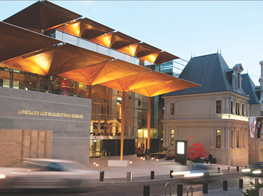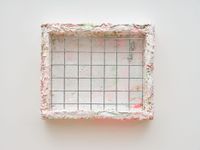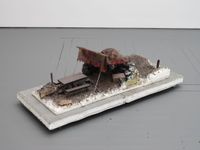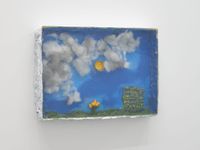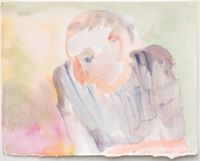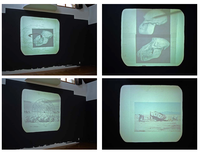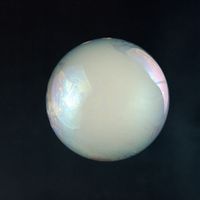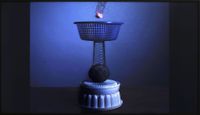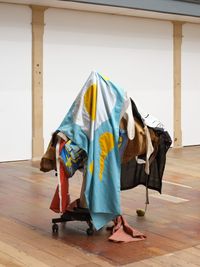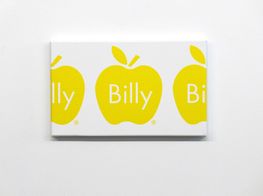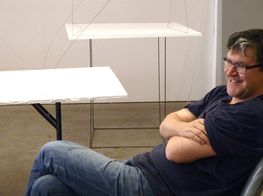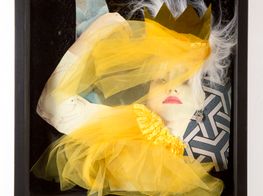Natasha Conland

Natasha Conland is Curator of Contemporary Art at the Auckland Art Gallery, Auckland, New Zealand.
She has curated numerous exhibitions including A Puppet A Pauper A Pirate A Poet A Pawn & A King: From the Naomi Milgrom Art Collection (2013); Made Active: The Chartwell Show (2012); the 4th Auckland Triennial, Last Ride in a Hot Air Balloon (2010); Mystic Truths, Auckland Art Gallery (2007); Café 2 for the Busan Biennale, South Korea (2006, co-curation); 2006 SCAPE Biennial of Art and Public Space, Christchurch (2006, co-curation) and The Fundamental Practice: NZ at Venice, Venice Biennale (2005).
She publishes regularly on art and culture, contributing to a number of leading contemporary arts journals and catalogues in the Asia Pacific region and co-edits Reading Room, a contemporary arts journal published annually by the Auckland Art Gallery's E.H. McCormick Library.
Most recently Natasha has curated Freedom Farmers: New Zealand Artists Growing Ideas, currently showing at the Auckland Art Gallery. Ocula talked with Natasha about the exhibition and contemporary New Zealand art.
The question is, at what point does it become valuable to analyse the strands of local activity, and how these interests interact with a set of topics which are important to our social, political and economic environment.
LTFreedom Farmers positions artists as 'innovators and leaders in New Zealand, a culture that values invention, forward thinking and liberty'. Does art have the power to affect change in society?
NCOf course, especially if you take for granted that art is part of society not separate from it, so like anything its actions effect social change from within. When we are children we're encouraged to play and experiment, and it helps establish our self-esteem and sense of individuality—this is change at the most basic level.
For me, at this time, this isn't so much about art hitting the headlines, but how we as a society endorse creative thinking and its capacity to launch alternatives for every aspect of society. In this way, visual art has a central role because of its accessibility.
LTThe exhibition also confronts universal themes of utopia, sustainability and artistic freedom. Does this help the exhibition to transcend national boundaries and place contemporary NZ art within a wider international context?
NCI start from the premise whenever I make exhibitions that New Zealand art is and has been part of a wider international context. The question is, at what point does it become valuable to analyse the strands of local activity, and how these interests interact with a set of topics which are important to our social, political and economic environment.
Historically, New Zealand contemporary art has had a high degree of criticality. Like in other areas of our activity, we challenge ourselves to perform in relation to an assumed audience—sometimes here, sometimes elsewhere.
ur artistic culture today also has really strong mentors, which has been important for growing the culture. Younger artists do not emerge out of the blue. Active artistic figureheads like Billy Apple, et al., Michael Parekowhai, Peter Robinson, Jacqueline Fraser, Michael Stevenson (to name just a few) provide a generation's worth of questions and provocations from which they start.
LTThis is the largest survey of contemporary New Zealand art at the Auckland Art Gallery in more than 25 years. Why now?
NCIt feels timely, not so much to rehash positions of nationhood but to reflect on a topic with international currency from the point of view of our local environment. Much of the decision-making around curating contemporary art reflects some sense of the timeliness of the discussion.
After more than a decade in which many have worked hard to see the story of New Zealand art better integrated with global concerns and catch up with the reality of artists practising offshore, I believe there is a need at this moment to again reflect on how and what the local is contributing to this story. That is not at the expense of our position within international art and ideas, but aligned to them.
The artists have played a strong role in the development of the exhibition catalogue, which in this case is a free newspaper with their writing and writing by others about their work. It's a valuable mechanism for expanding the ideas of the show from their points of view.
LTThe exhibition includes 20 artists, by no means a comprehensive survey of contemporary NZ art. How were artists selected to take part in the exhibition?
NCYes, I certainly didn't set out to do a survey; that's not the remit of the show. Rather, it is the job of this exhibition to take a topic and explore its relevance through the work of a selection of New Zealand artists. Importantly, artists were invited to contribute new ideas within the curatorial framework, and participate in the selection of their work and its configuration.
We also held a workshop in the early phases of the exhibition in which I invited all the available artists to contribute to a discussion about how the publication and public programme would align with the show—things that are usually seen as part of the Gallery's business. The artists have played a strong role in the development of the exhibition catalogue, which in this case is a free newspaper with their writing and writing by others about their work. It's a valuable mechanism for expanding the ideas of the show from their points of view.
LTWhat can visitors look forward to with respect to the programme of events scheduled to compliment the exhibition?
NCThere is a really full and diverse public programme, developed as I said at an initial workshop with artists, and fleshed out and expanded by a very thoughtful programming team here at the Gallery. Highlights include our Late Night Event, which is a panel hosted by Kim Hill on 'Creative Living', with a fantastically diverse selection of panellists from science, business and the arts, followed by music performance by Whitesaucer (exhibition artist Stella Corkery's duo).
There's also an Ideas Market providing opportunities for people to get free advice on how to alter their living environment, incorporate new ideas on sustainability, and get off the grid even at a micro level. There is a walking tour by Mathew Bradbury around the inner city examining some of the failed utopias of urban planning which have dogged our city since the 19th century—that should be lots of fun.
Plus ongoing artist and expert talks, performances, and key notes by people as diverse as Robert Long (Bean Sprout) and Catherine Long who live 'off the grid' in Gorge River, bogan culture expert Dave Snell, traditional Māori native plant expert Riki Bennett, as well as film screenings and 'student insights'. In addition, if you have young children, there are not one but two Big Day Art events tied to themes of the exhibition, and free Family Drop-ins every Saturday over summer.
My hope is that the support for artists to develop new works in a timely and considered way with adequate funding increases.
LTWhat's next for contemporary New Zealand art?
NCI have no idea of course—and that's the way it should be. Surprise us. The diversification of artistic media shown in Freedom Farmers is a fantastic signpost. My hope is that the support for artists to develop new works in a timely and considered way with adequate funding increases.
There is an appalling dearth of opportunities for artists to make new work outside commercial spaces—so that the aspirations for artists meeting a fresh public are limited, and this is a concern. However, this is an ongoing task, complemented by curatorial activity which gives appropriate framing to these opportunities—focusing less on outright production than on considered contribution and opportunities for dialogue with art and artists and their public. —[O]

